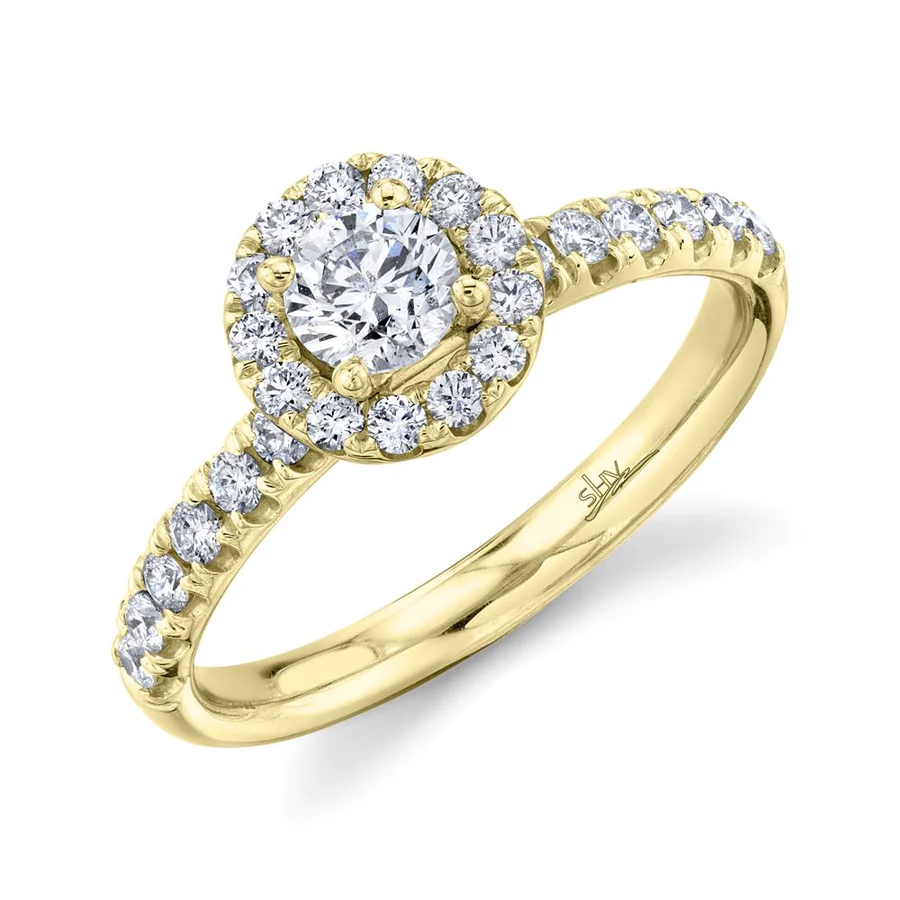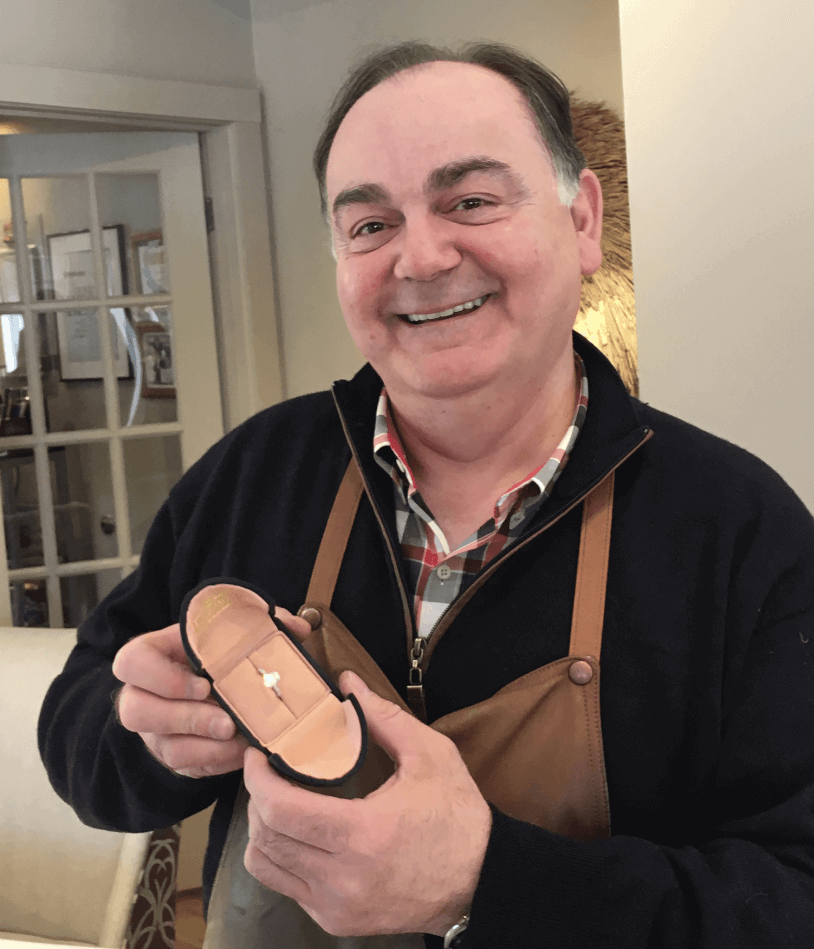DIAMOND EDUCATION
Understanding Diamond Cut: A Guide


Whether you’re buying an engagement ring for the love of your life or treating yourself to a set of diamond studs, you have probably heard of the 4Cs of diamonds while doing your research: Color, Cut, Clarity, and Carat.
While most would at first assess a diamond’s quality based off of more well known characteristics such carat or clarity, it’s important to remember that a diamond’s cut is oftentimes considered the most important factor when it comes to determining its beauty. Before you buy your next diamond piece, it helps to understand the basics of a diamond’s cut, so you can get the best looking stone for your price point.
The basics of diamond cut
Every diamond has dozens of facets, or flat surfaces, capable of reflecting light from natural and artificial sources. Cut refers to how these facets interact with light. Although it’s common for people to use the terms cut and shape interchangeably, they’re two different things. While cut refers to light reflection, shape refers to how a diamond looks when you view it from above. For example, the princess cut looks like a square with sharp corners.
When grading diamonds, a gemologist assesses many factors, including light performance. This is the technical term for how diamond facets interact with light. Brilliance, fire, scintillation, and light symmetry all play a role in the light performance of a particular diamond.
- Brilliance: Brilliance gives diamonds their “wow factor,” as it refers to the intense white light that radiates from a diamond. A stone with a high level of brilliance glows when exposed to light, while stones with low levels of brilliance look rather dull. You may even notice dark areas inside a diamond with low brilliance.
- Fire: Fire refers to the rainbow colors that appear as light moves within a diamond. If you put on a diamond ring and wave your hand around in a bright room, you should be able to see rainbow colors sparkling within the stone. The reason diamonds produce rainbow colors when exposed to light is because they have a high refractive index. Refraction is just a technical term for how light bends when it passes through a transparent object.
- Scintillation: Scintillation describes how much a diamond sparkles when you move it around or adjust the angle of your light source. Diamonds with high levels of scintillation are the most desirable.
- Light symmetry: A stone’s light symmetry describes how well it reflects and refracts light. Diamonds with good symmetry have high levels of fire and brilliance, while diamonds with poor symmetry don’t reflect and refract light well enough to sparkle or produce vivid rainbow colors.
The cut impacts all these factors, highlighting its importance in diamond selection. Incorrectly cut diamonds (either too deep or too shallow) don’t reflect light optimally, diminishing their brilliance.
A well-cut diamond uses angles to maximize fire and ensures symmetry for optimal light reflection, enhancing sparkle. Conversely, improper cuts can reduce fire and cause asymmetry, leading to less light reflection and diminished sparkle.
Before you buy a diamond, make sure you examine it carefully for signs of light leakage, which occurs when light disappears through the bottom of the stone. Light leakage makes diamonds appear dull and lifeless, reducing their aesthetic appeal.
In most cases, cut is the most important characteristic of a diamond, as it affects the stone’s appearance under a variety of lighting conditions. When buying diamond jewelry, you may want to sacrifice a little size or clarity to get a better cut.
Components of diamond cut
Many factors make up the cut of a diamond, including proportion, polish, and symmetry. Proportion refers to the length of each facet and the angle at which a diamond is cut. Symmetry describes the alignment of the facets. If the facets don’t align properly, the diamond may look misshapen, reducing its overall beauty. Polish refers to the smoothness of each facet. The smoother a facet is, the better it is at reflecting light.
Note that diamonds have both physical and virtual facets. A physical facet is a cut that you can see, while virtual facets form due to the reflection of light. Before you buy a diamond, it’s helpful to know about these physical facets:


- Table: The table is the facet that you see when you view a diamond face up. It reflects rays of light, making it critical for determining the brilliance and scintillation of each stone.
- Girdle: The girdle is the widest part of a diamond.
- Crown: The crown of a diamond sits above the girdle.
- Pavilion: If you look below the girdle, you’ll see the pavilion. It plays an important role in determining brilliance, as it reflects light through the crown.
- Culet: The culet is the facet at the very bottom of the diamond.
Depth also influences a diamond’s brilliance, fire, and scintillation. To determine the depth of each stone, a gemologist measures the height from the culet to the table.
Diamond cut grades explained
The Gemological Institute of America (GIA) uses a standardized scale to assign a cut grade for each diamond. A stone with a “poor” grade generally has low brilliance, making it appear dull. “Excellent” and “very good” grades indicate quality, as they’re given to stones with high levels of fire and brilliance.
When grading the cut of a diamond, a gemologist uses criteria from three categories: face-up appearance, design, and craftsmanship. Face-up appearance includes the characteristics of brilliance, fire, and scintillation. Design characteristics include weight ratio and durability. The craftsmanship category focuses on the polish and symmetry of the diamond.
Gemologists use the GIA scale to assign cut grades to round diamonds. The scale doesn’t apply to fancy cuts due to differences in facet arrangement. These are the five grades:




- Excellent: An excellent grade indicates that a diamond has a high level of brilliance and scintillation. Excellent diamonds also have a good balance of light and dark areas.
- Very good: If you view a diamond with a very good grade, it may be a little dark in some areas. Very good diamonds still have high levels of scintillation and brilliance, however.
- Good: A good cut doesn’t have a high level of scintillation. You may also notice some darkness around the girdle.
- Fair: A fair stone has little scintillation or brilliance. You’ll also see a dark table and a dark ring around the girdle.
- Poor: Poor cuts have minimal brilliance or scintillation. It’s also common for a stone with a poor grade to have a black center and skewed proportions.
Conclusion: Choosing the right diamond cut
When selecting a diamond, the cut significantly influences its appearance. It’s essential to find a balance between cut quality, budget, and personal taste. While some may opt for a larger size, sacrificing brilliance, others might choose a smaller, more sparkling stone. Generally, a well-cut diamond, even with lower clarity, tends to look more appealing than a higher clarity diamond with a poorer cut.
Ultimately, what’s important is finding a balance that aligns with your personal preferences and price point. Sometimes, this may mean choosing a diamond with a lower clarity or color grade to accommodate a better cut or larger size.
Remember, the right diamond is one that resonates with your personal style and holds significance for you. Its true value lies not just in its physical attributes, but in the joy and meaning it adds to your life.
If you’re in the market for a diamond piece, we invite you to our showroom in Chestnut Hill. We have a number of pieces in our showcases, and furthermore, specialize in creating one of a kind diamond pieces that you will be sure to cherish and love. With over 30 years of jewelry experience, our team can help you navigate the world of diamonds to help you find or create the perfect piece.




